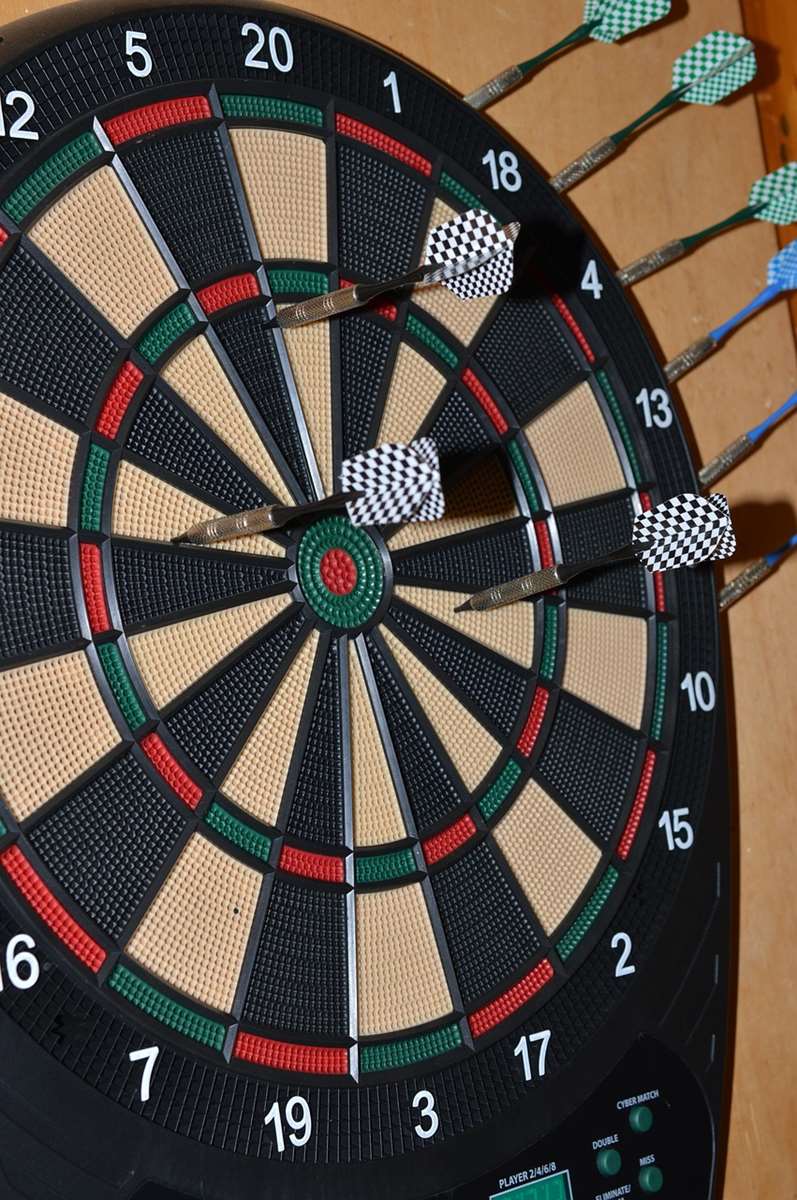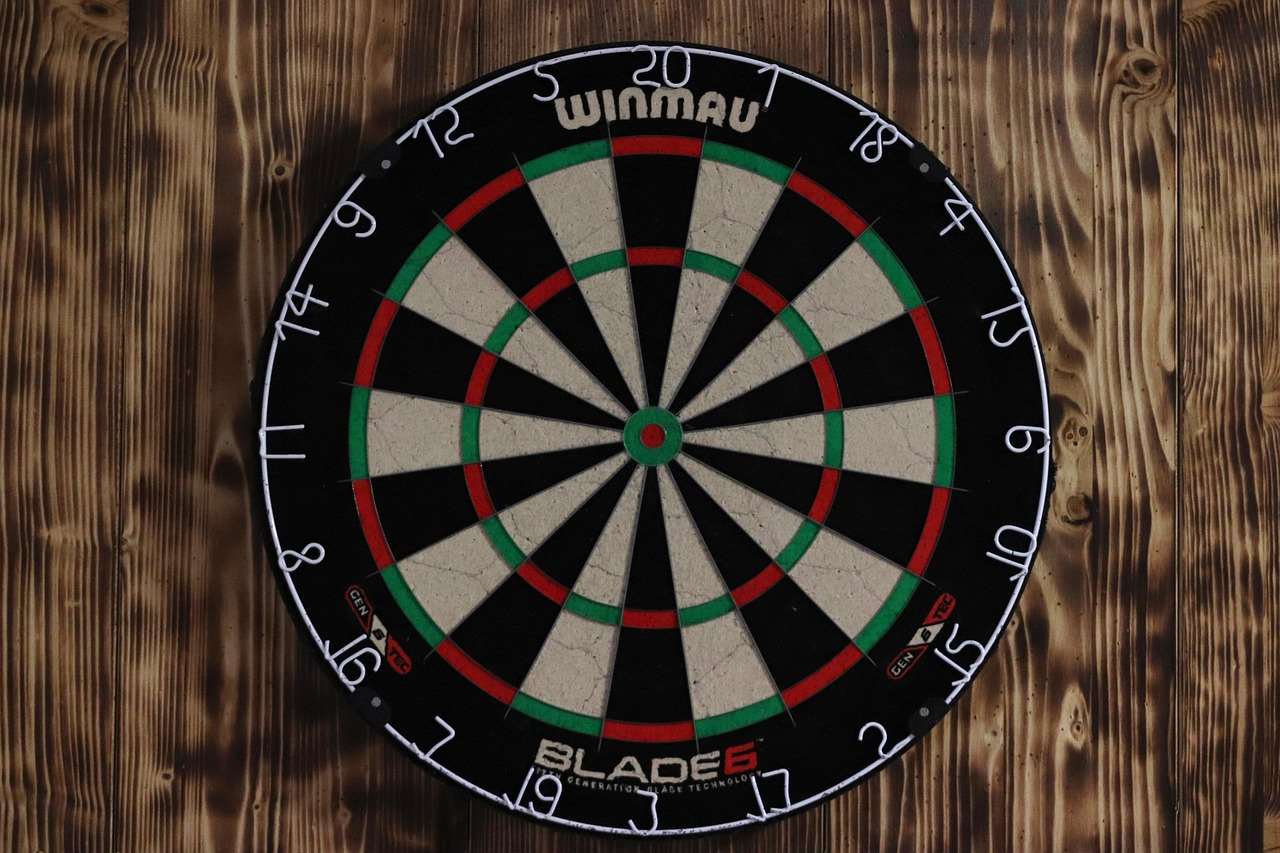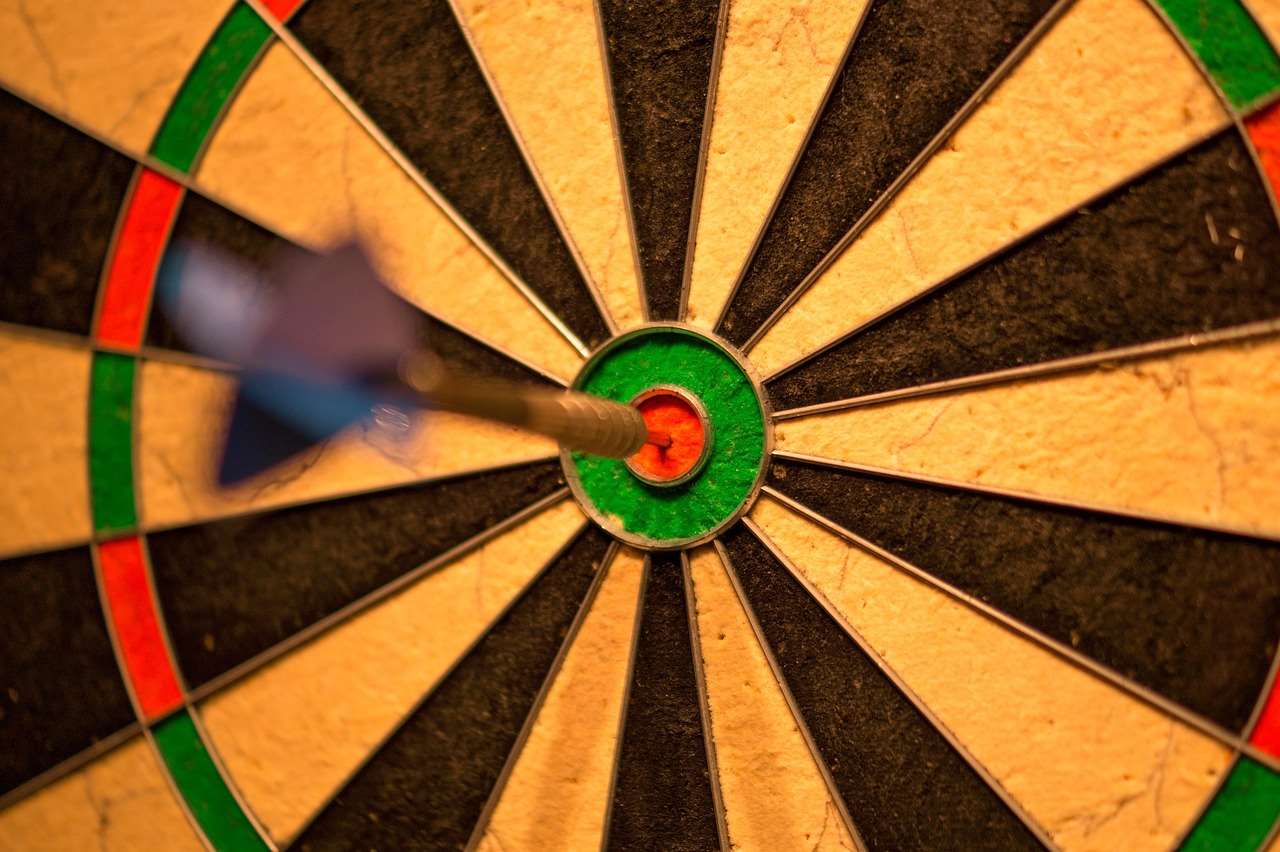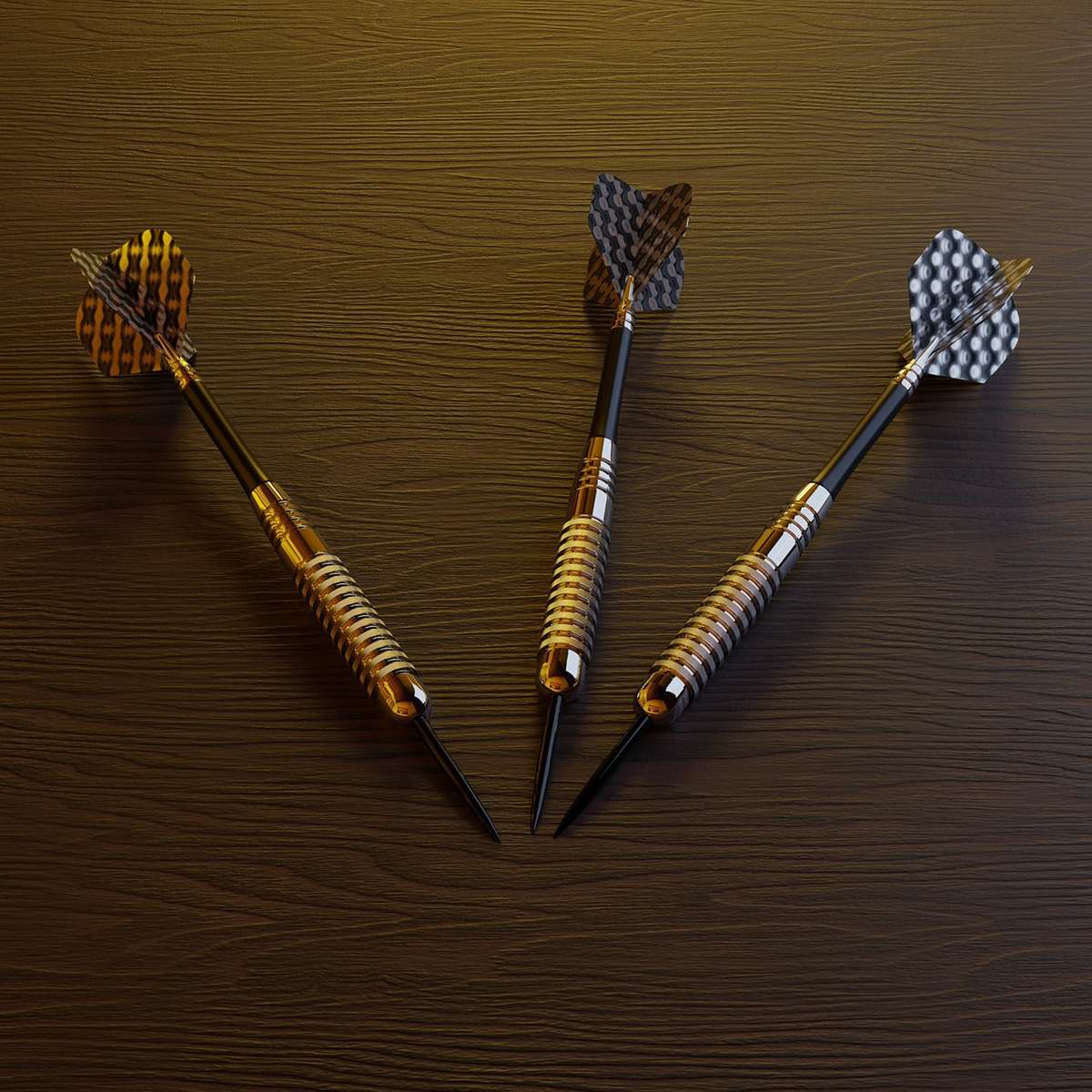Mastering Cricket darts on your own is achievable with focused practice; this guide provides structured drills to improve your accuracy, strategie, and overall game. Learn how to transform solo sessions into effective training for competitive play.
⚠️ Still Using Pen & Paper (Of een schoolbord)?! ⚠️
Stap in de toekomst! De Dart Teller -app behandelt alle scoren, stelt kassa voor, en volgt uw statistieken automatisch. It's easier than you think!
Probeer de Smart Dart Teller -app gratis!Klaar voor een upgrade? Klik hierboven!
Why Solo Practice is Crucial for Playing Cricket Darts
Terwijl playing Cricket darts solo practice might seem less exciting than a head-to-head match, it’s an indispensable tool for honing your skills. Think of it as weightlifting for darts – the focused repetition builds muscle memory and refines your technique. Solo practice allows you to:
- Identify and correct weaknesses: Without the pressure of competition, you can objectively assess your throwing motion, houding, and target selection.
- Develop consistency: Repeating drills reinforces proper form and helps you achieve more predictable results.
- Experiment with strategy: Test different approaches to hitting specific numbers or setting up advantageous positions.
- Improve mental toughness: Practicing alone requires discipline and focus, building mental resilience that will serve you well in competitive matches.
- Track your progress: Keeping records of your scores during solo sessions provides valuable feedback on your improvement.
Uiteindelijk, consistent solo practice transforms into noticeable improvements in your game, making you a more formidable opponent.

Setting Up Effective Solo Cricket Darts Practice Sessions
A haphazard approach to solo practice is unlikely to yield significant results. To maximize your time and effort, follow these steps to set up effective training sessions:
1. Define Your Goals
What do you want to achieve during this session? Are you focused on improving your accuracy on a specific number like 20 of 19? Or are you working on your closing strategy and hitting doubles? Clearly defining your goals will help you structure your practice and stay motivated.
2. Create a Structured Drill
Instead of just throwing darts aimlessly, design specific drills that target your goals. Bijvoorbeeld, if you want to improve your accuracy on 20, you could try the “20’s Challenge”:
- Throw 9 darts at the 20.
- Calculate your score: 3 points for a triple 20, 2 points for a double 20, 1 point for a single 20, En 0 points for anything else.
- Repeat the drill multiple times and track your scores.
Vary your drills to keep things interesting and challenge different aspects of your game.
3. Record Your Results
Tracking your scores is crucial for monitoring your progress. Use a notebook, a spreadsheet, or a dedicated darts app to record your scores for each drill. This data will allow you to identify areas where you are improving and areas where you still need to focus.
4. Practice Consistently
The key to improvement is consistent practice. Aim to practice for at least 30 minutes several times a week. Even short, focused sessions are more effective than infrequent marathon sessions. Regular practice builds muscle memory and helps you internalize proper technique.
5. Maintain Proper Form
Throughout your practice sessions, pay attention to your form. Ensure your stance is stable, your grip is consistent, and your throwing motion is smooth. Avoid developing bad habits that can be difficult to break later. You might find the need for Adapting darts games skills as you practice more.
Specific Cricket Darts Solo Practice Drills
Here are some specific drills you can incorporate into your solo practice sessions. These drills are designed to improve your accuracy, strategie, and mental toughness:

1. De “Around the Board” Oefening
This drill focuses on improving your accuracy on all the numbers on the dartboard. Start with number 1 and work your way around the board, hitting each number three times (single, double, and triple) before moving on to the next. This is a fantastic way of working on your general dart accuracy.
2. De “Closing Practice” Oefening
This drill focuses on improving your ability to close out the game by hitting doubles. Set up a series of doubles that you need to hit to close out. Bijvoorbeeld, start with double 20, then double 19, then double 18, and so on. Repeat the sequence multiple times and track your success rate.
3. De “Marking Targets” Oefening
In Cricket, you need to “mark” numbers by hitting them three times. This drill focuses on improving your ability to consistently hit the same target multiple times. Choose a number (Bijv., 20) and throw 9 darts at it. Count how many times you hit the single, double, or triple. Repeat the drill with different numbers.
4. De “Strategic Setup” Oefening
Cricket isn’t just about hitting numbers; it’s also about strategic setup. This drill focuses on improving your ability to set up advantageous positions. Bijvoorbeeld, you could practice hitting a single 20 to leave yourself with a double 20 to close out. Consider Darts games different skill levels when considering your strategy.
5. De “Pressure Practice” Oefening
This drill simulates the pressure of a competitive match. Set a target score that you need to achieve in a certain number of darts. Bijvoorbeeld, you could try to score 100 points in 9 darts. If you fail, you have to start over. This drill helps you develop mental toughness and learn to perform under pressure.
Remember to adjust these drills to suit your skill level and goals. Don’t be afraid to experiment and create your own drills that target your specific weaknesses.
Mental Strategies for Solo Darts Training
Playing Cricket darts solo practice isn’t just about physical skill; it also requires mental discipline. Here are some mental strategies to help you stay focused and motivated during your solo sessions:

1. Visualisatie
Before each throw, visualize the dart hitting your target. Imagine the trajectory of the dart, the feel of the release, and the sound of the dart hitting the board. Visualization helps you program your subconscious mind for success.
2. Positieve zelfpraat
Vervang negatieve gedachten door positieve bevestigingen. In plaats van na te denken “I’m going to miss,” Vertel jezelf “I can hit this.” Positive self-talk boosts your confidence and helps you stay focused.
3. Focus on the Process, Not the Outcome
Instead of worrying about the score, focus on the process of throwing the dart. Concentrate on your stance, grip, and throwing motion. By focusing on the process, you’ll be less likely to get distracted by pressure and more likely to execute your throws effectively.
4. Take Breaks
If you start to feel frustrated or fatigued, take a break. Step away from the dartboard, stretch, and clear your mind. Returning to practice with a fresh perspective will help you stay focused and motivated. Remember to adjust Adjusting dart game rules when needed.
5. Reward Yourself
Celebrate your successes, no matter how small. After achieving a goal, reward yourself with something you enjoy, such as listening to music, watching a video, or having a healthy snack. Rewarding yourself reinforces positive behavior and keeps you motivated.
Advanced Techniques for Solo Cricket Darts Practice
Once you’ve mastered the basics, you can incorporate more advanced techniques into your solo practice sessions to further elevate your game:

1. Variance Training
Introduce controlled variations in your throwing technique to develop adaptability. Bijvoorbeeld, slightly alter your stance, grip, or release point and observe the impact on your accuracy. This helps you develop a deeper understanding of your throw and compensate for minor inconsistencies.
2. Opponent Simulation
Imagine you’re playing against a specific opponent with known strengths and weaknesses. Adapt your strategy and target selection based on their likely moves. This enhances your tactical thinking and decision-making skills. Playing Darts varianten leuke spellen allows to enhance strategic thinking.
3. Mental Math Drills
Practice calculating scores and planning your next moves in your head without using a calculator or scorecard. This improves your mental agility and allows you to make quicker decisions during matches. This involves improving your mental calculation skills.
4. Equipment Experimentation
Experiment with different dart weights, shaft lengths, and flight shapes to find the optimal setup for your throwing style. Minor adjustments to your equipment can have a significant impact on your accuracy and consistency.
5. Video Analysis
Record yourself throwing darts and analyze your technique in slow motion. Identify any flaws in your form and make adjustments accordingly. Video analysis provides valuable feedback that you might not be able to see otherwise.
Troubleshooting Common Problems in Solo Cricket Practice
Even with the best preparation, you may encounter challenges during your solo cricket darts practice. Here’s how to address some common problems:

1. Plateauing
If you find that your scores have stopped improving, it’s time to shake things up. Try new drills, focus on different aspects of your game, or seek feedback from a coach or more experienced player. It might be helpful to Scaling dart game difficulty to challenge yourself.
2. Loss of Motivation
If you’re feeling bored or unmotivated, try setting new goals, joining a darts league, or finding a practice partner. Injecting some novelty and competition into your training can reignite your passion for the game.
3. Developing Bad Habits
If you notice yourself developing bad habits, address them immediately. Seek feedback from a coach or experienced player and focus on correcting your form. Don’t let bad habits become ingrained, as they can be difficult to break later.
4. Physical Discomfort
If you experience any pain or discomfort while throwing darts, stop and rest. Ensure your stance is comfortable and your body is properly aligned. If the pain persists, consult a doctor or physical therapist.
5. Distractions
Minimize distractions during your practice sessions by turning off your phone, closing your door, and creating a quiet and focused environment. If you find it difficult to concentrate, try practicing mindfulness or meditation techniques.
Conclusie: Mastering Cricket Darts Through Solo Practice
Playing Cricket darts solo practice is a vital component of becoming a skilled darts player. By setting clear goals, creating structured drills, tracking your results, and maintaining a positive mindset, you can transform your solo sessions into effective training for competitive play. Remember that consistency is key – regular practice, even for short periods, will yield significant improvements over time. Embrace the challenges, celebrate your successes, and enjoy the journey of mastering Cricket darts. Nu, take these tips and techniques, apply them to your practice, and watch your game soar! Ready to take your game to the next level? Start implementing these strategies today and see the difference!
Hoi, Ik ben Dieter, En ik heb Dartcounter gemaakt (Dartcounterapp.com). Mijn motivatie was geen darts -expert - helemaal tegenovergestelde! Toen ik voor het eerst begon te spelen, Ik hield van het spel, maar vond het moeilijk en afleidend om nauwkeurige scores te houden en statistieken te volgen.
Ik dacht dat ik niet de enige kon zijn die hiermee worstelde. Dus, Ik besloot om een oplossing te bouwen: een eenvoudig te gebruiken applicatie die iedereen, Ongeacht hun ervaringsniveau, zou kunnen gebruiken om moeiteloos te scoren.
Mijn doel voor Dartcounter was eenvoudig: Laat de app de nummers afhandelen - het scoren, de gemiddelden, de statistieken, Zelfs checkout suggesties - zodat spelers puur kunnen richten op hun worp en genieten van het spel. Het begon als een manier om het probleem van mijn eigen beginners op te lossen, En ik ben heel blij dat het is uitgegroeid tot een nuttig hulpmiddel voor de bredere darts -community.